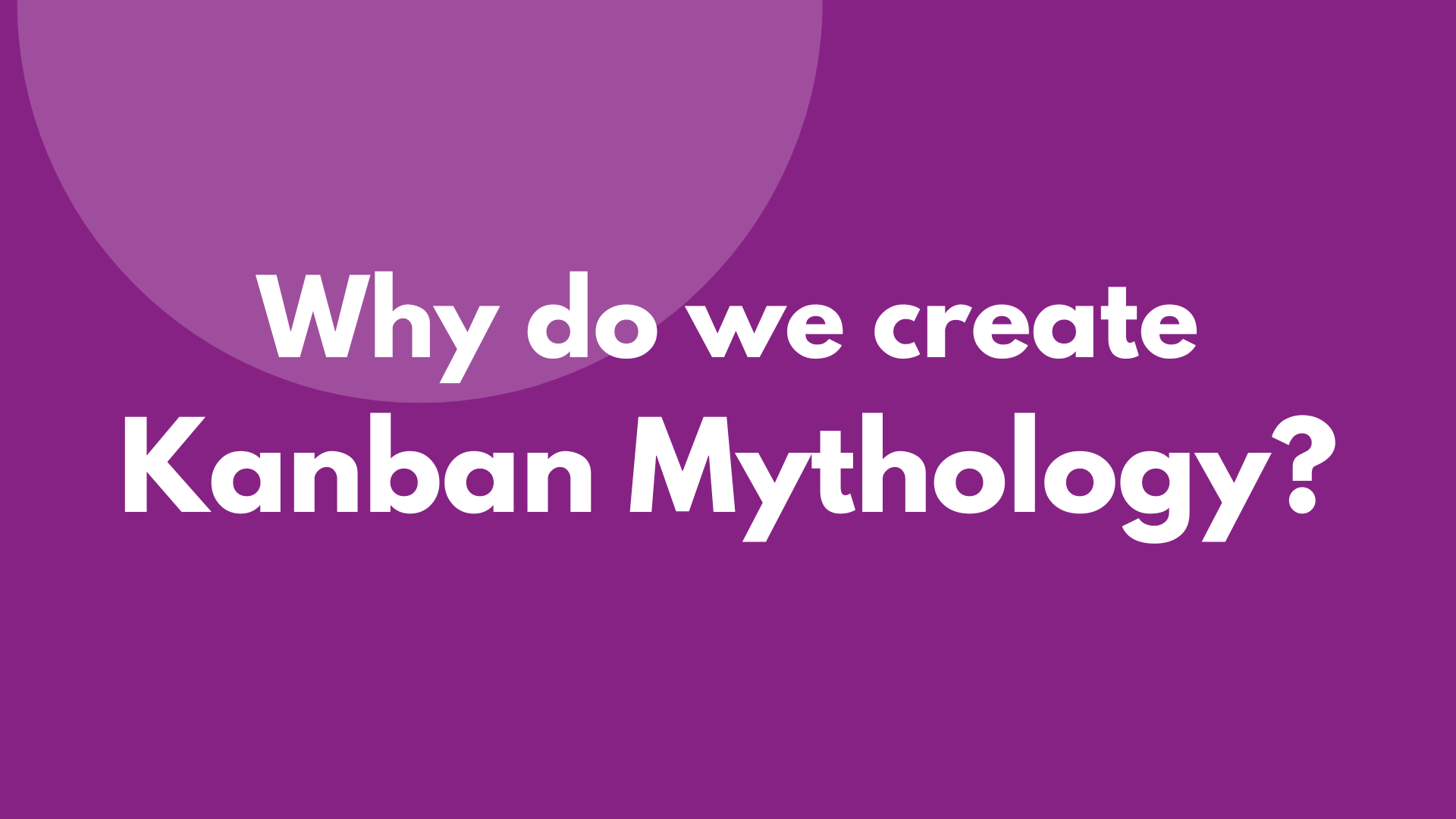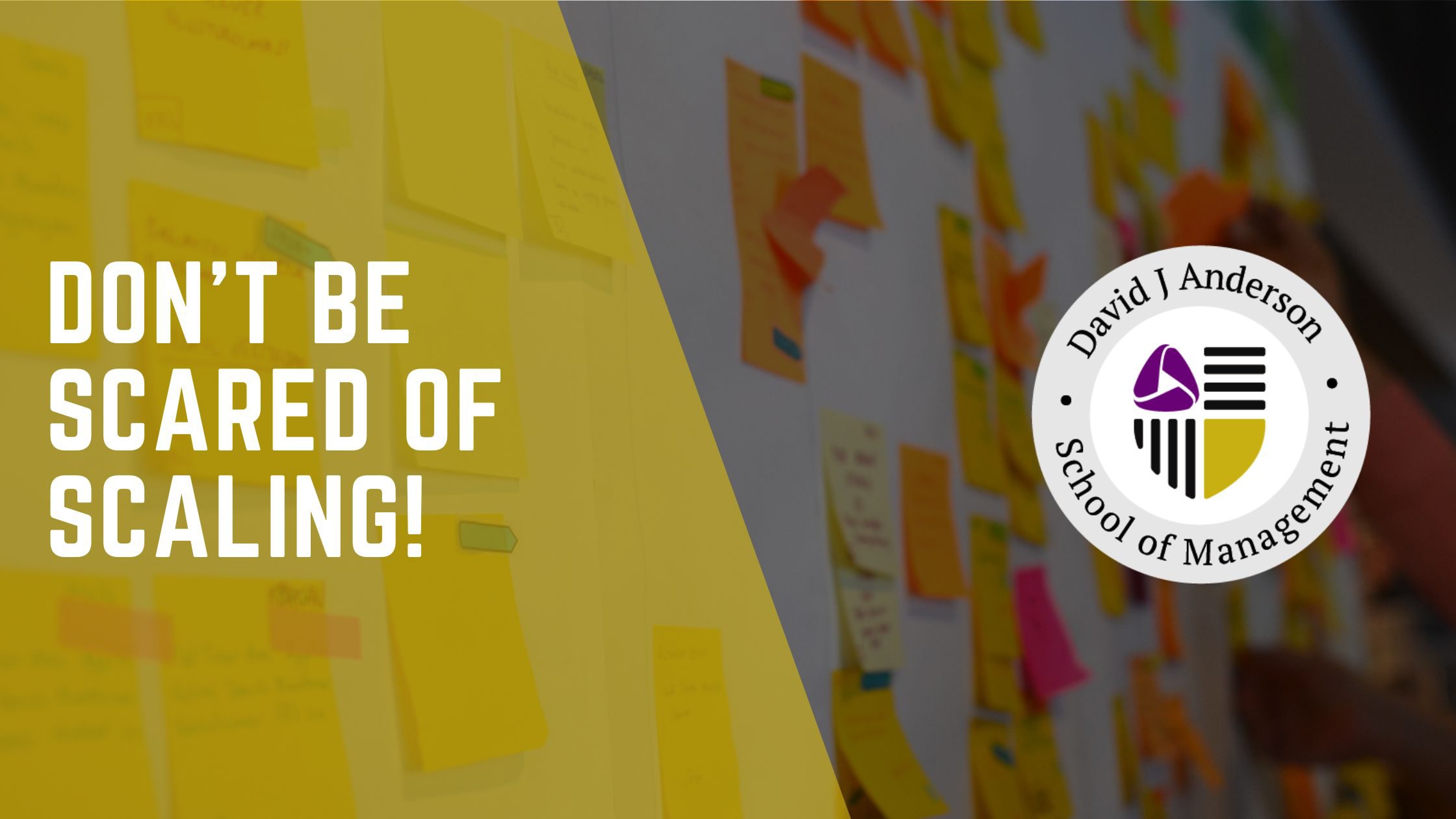Why do we create Kanban mythology?
“On the deepest level, myth familiarizes reality: it explains the unknown by exploiting known patterns.”
M. Napiórkowski (1)
Myths are an inherent part of our life. Building myths, we are not so different from our Greek or Roman ancestors, there are just new areas of interest. So we shouldn’t be surprised that the Agile community with similar willingness and effort creates the myths to debunk them right after. If you look for “Agile myths”, the list of articles will be endless. We also started some time ago “Debunking Kanban myths” series of blog posts to clarify and demystify the most popular misconceptions.
But maybe we are all wrong, trying to tilt at windmills. Maybe we should stop being Don Kichots of Agile and instead of that we should look first at WHY and then at HOW myths are born.
Learning process – not so obvious
Before I try to answer these questions, I will take a step back in history to look at the problem of absorbing knowledge. In 1885 Hermann Ebbinghaus published a hypothesis based on a series of tests run on himself between 1880 and 1885 to memorize 3-letter nonsense syllables, like “WID” or “ZOF” and then to recall them in specific time intervals (after x minutes, hours and days). Based on the results he created a graph called “forgetting curve” and the equation associated with that graph. (2)

(picture by: https://intelalearning.wordpress.com/2018/07/19/learning-myth-1-ebbinghaus-forgetting-curve/)
There are few problems with Ebbinghaus research. The one is of course sample size, but the test was repeated in 2015 and results were similar. (3)
The main problem with this theory is that the psychologist tried to remember nonsense syllables, which had no actual meaning. If I present you the following words: “wid”, “hat”, “zof”, “rgz”, “tie”, “fly” – which one would you bring from your memory tomorrow? Our brain will look for something familiar and understandable to drop an anchor right there. We will be searching for something that is meaningful to us and we can put a new new into a known context.
What is interesting here, also Ebbinghaus knew or felt the anchor is important, cause one of the solutions he suggested for better memorizing was using mnemonics, which are nothing more but… adding a meaning to something new or nonsense.
This is the first clue for answering the “why?” behind the mythology of Kanban.
How do we create memories?
“Our senses aren’t like high-def recording equipment. We only take in snippets of the information, and our mind fills in the gaps for us (…). All of our senses work like this (…). And up here (the brain – AR), it doesn’t take in everything. It doesn’t store everything in memory. It takes snippets, little grabs of feelings, of sights, sounds, tastes, smells, emotions. And then it pieces them together when you recall a memory. When it pieces them together, it makes up the bits in between again. It creates a movie, only the movie is based on a true story.
The next time you recall that same event, you’re recalling it from that memory, taking snippets of that memory and piecing it together again. So next time, it’s actually more like a screenplay based on a book based on a true story. Each time you remember something, it changes a bit more. It takes one more step away from reality, even if it feels like you remember it clearly as day.” (4)
This thought by Ash Donaldson resonates very strongly with what we learn about… learning from Nick Shackleton-Jones, who clearly states that we don’t remember things and events, but feelings. “You don’t actually remember anything, you just store how things made you feel and you use those emotional imprints to create memories on demand.” (5) This seems to be a pretty bold statement, but if we add an affective context model, it starts explaining many situations we observe.
The main assumption of an affective context model is that “what are being decoded are your emotional reactions to events and information – how these make you feel.” (6)
To support this statement, think about – and feel – your emotional reactions to: “the touch of a summer rain on your arms”, “the smell of a morning coffee”, “the tune of Silent Night“. They are difficult to describe in one word as “sad”, “happy”, “angry” or “annoyed”. You have already created some affective context to each of these events (and thousands of others) through your entire life.
Additionally people are born storytellers! What do we do, when we meet in a group of friends? We tell stories. And, let’s be honest, the stories are not status reports. We change a lot of details – sometimes intentionally to make the story or ourselves look better and sometimes not, cause this is how memory works.
Creating stories our brain will look for known patterns to anchor them (as we saw in Ebbinghaus experiment) and this is what we observe, when we look at the most popular myths of Kanban we see or hear: “Kanban method means kanban board” and “Kanban is for maintenance only.” Why is that? Because:
- Kanban board is associated with the first practice of visualization, which is the most popular and seems to be perceived as the easiest of them all. What is more, the board in the form which we observe the most often (columns, white background…) is well-known widely, not only within the Kanban practitioners community.
- The first Kanban implementation took place in the maintenance team, hence will always be linked to the concept of “the tool for support”.
- Summarizing: affective context model, storytelling and the way our memory works are important to understand how we create Kanban mythology.
Cognitive dissonance
“Cognitive dissonance is when your mind tries to hold two conflicting ideas simultaneously. It gives you a horrible feeling. It’ll be a negative feeling, it’ll be feeling sick. It’ll be feeling anxious or even angry (…). That’s what is known as “confirmation bias,” seeking confirming evidence of our beliefs and disregarding or minimizing the impact of disconfirming evidence. That’s just one of the mechanisms. It’s one of the most common mechanisms that our brain uses to protect us from cognitive dissonance. But it’s just one of many, many biases that we have (…). These biases build up and attack our ability to reason logically. And people take advantage of this.” (7)
Cognitive dissonance is an ugly beast, which we need to deal with every day. Many times a day! It makes us feel really, really bad, but on the other hand realizing that we are in the state of such a dissonance may help us to more consciously think about ourselves.
In January 2020 I observed cognitive dissonance on a massive scale in Poland. I didn’t research other countries, but I believe the situation might have repeated elsewhere too. Huge bushfires in Australia were called: “natural mechanisms”, “seasonal events” or “photoshopped pictures”. Suddenly many people discovered “auntie from Australia”, who says that “everyone is panicking whilst all Aussies have actually no idea what it is about”. More ambitious minds looked for historical data to support “world conspiracy theory”. Yes, we humans would put a lot of effort to make a deal with our brain and justify inconvenient truth.
The same rule applies to Kanban.
Kanban is inconvenient. Kanban looks for stressors in your process. Kanban challenges you in many ways and at every step. Kanban will help you with this journey, but you will not experience helicopter parenting, but rather demanding support. And this is why Kanban may be rejected.
But cognitive dissonance will not allow to simply justify the rejection as “because reasons, that’s why”. We will look for assistance in Kanban mythology: “Kanban doesn’t work”, “Kanban is not for big/small/software/business/my/your project”, “I have a board already, why should I implement more?”
What’s next?
It’s not our responsibility to fight mythology. We are not able to. Myths will leave and they will be just fine (even if my cognitive dissonance switched on red alert, when I wrote these words!).
Our responsibility is to build positive Kanban affective context and help people in creating their own experience, energizing their feelings and inspiring them to go and share their stories full of hearty emotional resonance.
Check out our Kanban Management Professional courses here.
And for more information on our upcoming classes check our schedule.
**********************
(1) M. Napiórkowski, “Czym jest współczesny mit?”, http://mitologiawspolczesna.pl/wspolczesny-mit-legenda-miejska
(2) https://en.wikipedia.org/wiki/Forgetting_curve
(3) Murre J.M.J., Dros J. (2015) “Replication and Analysis of Ebbinghaus’ Forgetting Curve”. PLOS ONE 10(7): e0120644. doi: 10.1371/journal.pone.0120644
(4) A. Donaldson, “Cognitive dissonance”, https://www.youtube.com/watch?v=NqONzcNbzh8
(5) N. Shackleton-Jones, “How people learn?”, Kogan Page Limited, 2019, p. 24
(6) N. Shackleton-Jones, “How people learn?”, Kogan Page Limited, 2019, p. 26
(7) A. Donaldson, “Cognitive dissonance”, https://www.youtube.com/watch?v=NqONzcNbzh8





